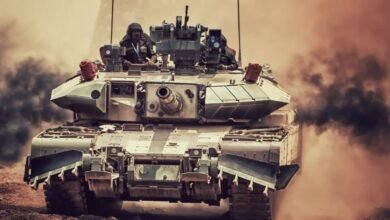Explained: How Does Avalanche Rescue System Works?

We all are always excited to know about bulletproof helmets and jackets. Because all these devices protect the Brave Soldiers of our country from the bullets of the Enemy. But in this discussion, we ignore those important pieces of equipment which save the lives of the soldiers by indirect contribution. And one such type of equipment is Avalanche Rescue System.
This month, the Indian Army procured 20 Advanced Avalanche Rescue Systems from a Swedish firm Recco for Deployed Soldiers at High Altitude. So we also need to know about it as a responsible and curious defense lovers.
So, Let’s start the discussion with
What Is An Avalanche Rescue System
According to its name, this Avalanche Rescue System is capable of locating people buried in avalanches quickly and accurately. The credit for the development of this system based on the principle of harmonic radar goes to Magnus Granhed.
Sweden-born Magnus Granhed began work on it in response to his personal experience with an avalanche accident in 1973, in collaboration with a team from the Royal Institute of Technology. After starting work in 1979, in just 4 years till 1983, this team prepared the first functional prototype named R1. In the same year, Magnus Granhed also got the company registered under the name Recco in Lidingö, Sweden. In 1987, Magnus Granhed proved the effectiveness of his system by locating a woman.
How Does Recco’s Avalanche Rescue System Work?
Recco’s rescue system based on the harmonic radar system is made up of 2 parts –
- Passive and light Reflector/Transponder
- Portable Detector
1. Reflector/Transponder
It is a passive transponder measuring 13 mm × 51 mm × 1.5 mm and weighing 4g. It does not require any batteries or activation or an antenna etc. It is sewn on the clothes worn by the same person. more than 150 brands integrate Recco reflectors into their outdoor gear, including Ski Boots, Helmets, Hiking Shoes, Pants, and Backpacks.

According to the company, the ideal condition is to have two reflectors at different locations on the body of an individual. But In the Indian Armed Forces will have 3 reflectors for each soldier.
2. Detector
A detector equipped with harmonic radar emits highly directional radar signals. If the radar signal hits the reflector, it will be echoed in the detector. The diode in the detector gives double the frequency of the returned signal. The transducer converts this amplified signal into an audio signal.
Thus, the returned signal is translated into an audio tone if the detector is pointed in the direction of a reflector. Identifying from the tone a trained rescue can determine the location of the buried victim.
In addition, Recco’s detector comes in 2 configurations. Recco R-series is a single-person operable detector. The other is the D-series helicopter-operated detector. Whose D-1 prototype was introduced in 2014. And in 2016 the current model of helicopter detector named Recco SAR was introduced. In 2009, a 900 gm weighing detector named R-9 was launched. During a rescue, its signal can detect Recco reflectors within a range up to 80 meters through the air and 20 meters through packed snow. The detection range also depends on snow conditions and depth aspects.

Indian Army has purchased 20 Recco Rescue Systems in which each system will have 150 transponders. In this way, a rescue system can save 50 Army Personnel by applying 3 Reflector/Transponder to each Soldier.
How Does It Actually Save Our Soldiers?
Whenever the troops go for patrol or operation in an avalanche-prone area, 3 reflectors will be attached to each soldier’s clothing and gear. Unfortunately, if soldiers get buried in an avalanche or landslide, trained rescue teams from their posts will come to rescue them. These rescuers will also bring detectors with them, with the help of which they will locate the buried soldiers on time. “When a person is trapped in snow, it is the first 25 minutes that are the most critical. His chances of survival go down after that” the source said.
In conclusion, this is equipment that saves the lives of our brave soldiers through its indirect contribution. If you want to know about such another equipment then you should definitely visit:- Explained: How Ejection Seat Works?





